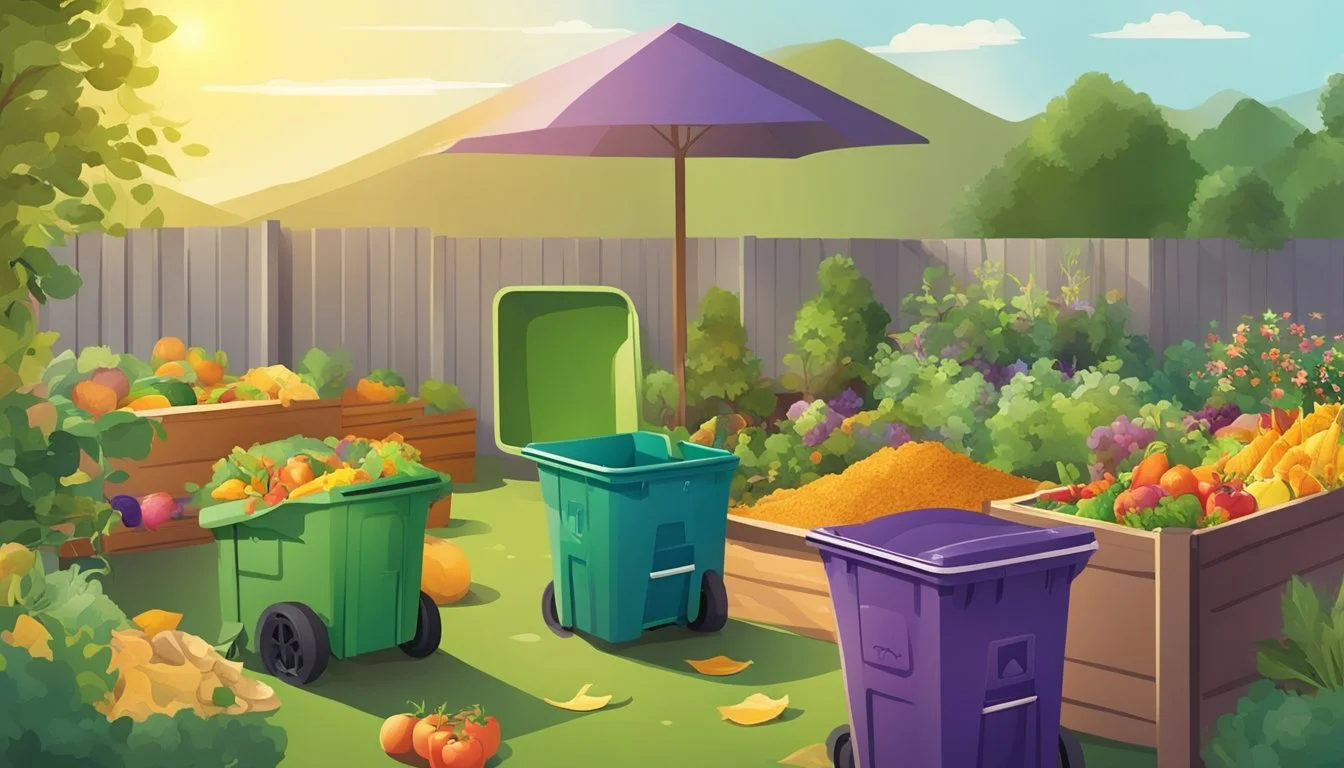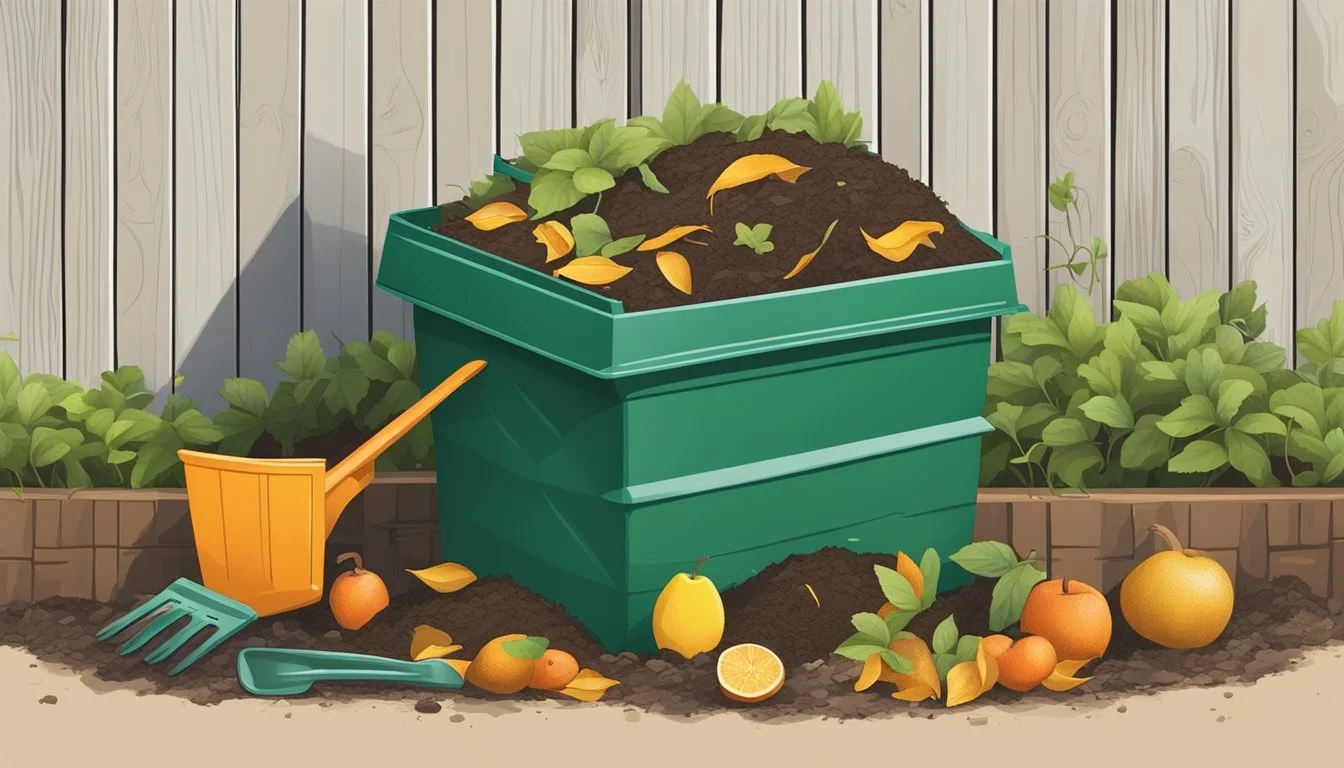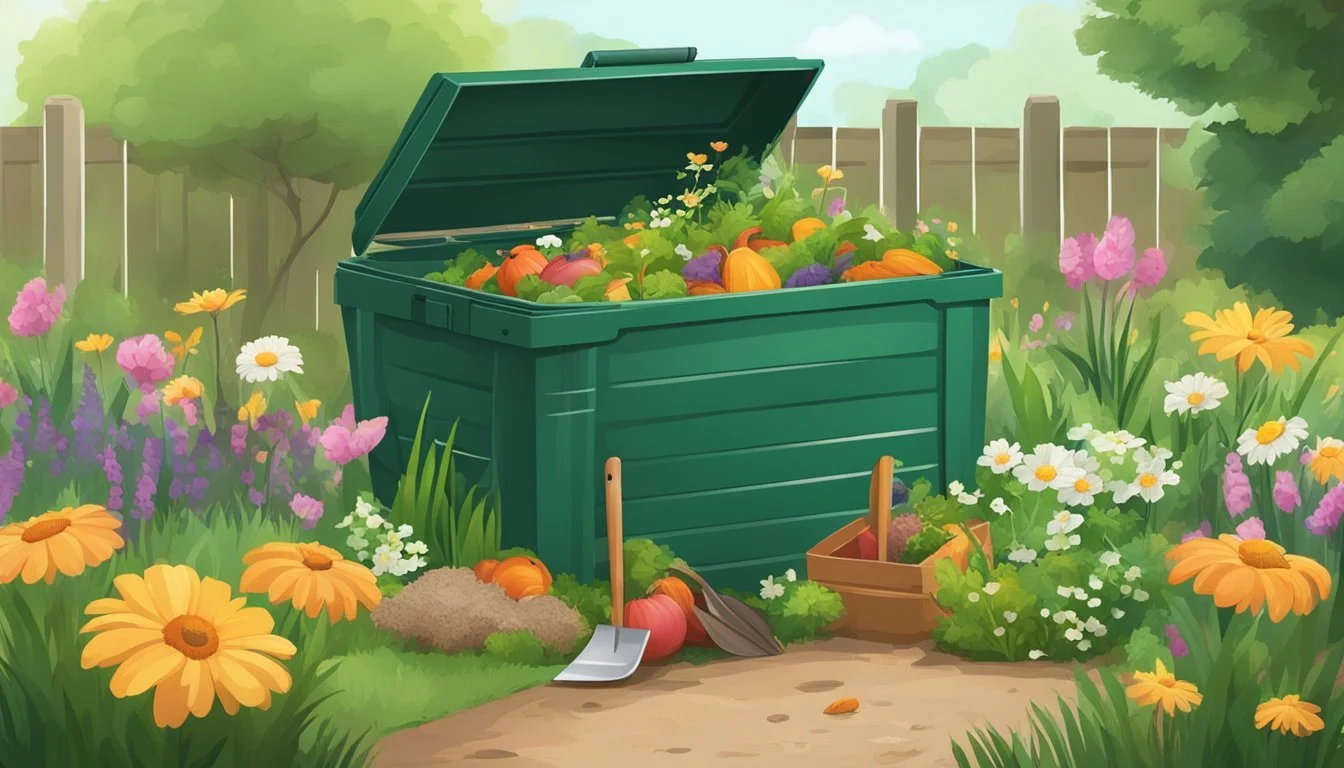Guide to Composting in Sparks, NV
Essential Tips for Efficient Waste Reduction
Composting in Sparks, NV, offers residents a practical and environmentally friendly way to reduce waste and enrich soil for healthier plants and gardens. This process, which involves the natural decomposition of organic matter, transforms kitchen scraps and yard waste into valuable compost. In the climate of Sparks, with its distinct seasons, composting can be an efficient method to manage organic waste year-round, turning potential landfill fodder into potent fertilizer.
The key to successful composting is understanding the balance between green and brown materials. Green materials are nitrogen-rich and include items like fruit and vegetable scraps and lawn clippings, while brown materials provide carbon, such as dead leaves and branches. In Sparks, access to these materials can vary throughout the year, but with the right blend, residents can maintain a compost pile that decomposes effectively and is less likely to attract unwanted pests or create unpleasant odors.
By incorporating composting into their routine, the community of Sparks not only contributes to a more sustainable environment but also enjoys the benefits of improved soil quality. This enhanced soil condition supports the growth of robust plants and vibrant gardens—a boon for local horticulture enthusiasts and conservationists alike. From understanding the basic components of composting to managing a thriving compost system, residents can turn to local resources like Moana Nursery for guidance and support.
The Importance of Composting
Composting transforms organic waste into valuable fertilizer, benefiting the environment in multiple ways. It enriches the soil, decreases waste in landfills, and reduces the emission of greenhouse gases.
Environmental Benefits
Composting plays a pivotal role in protecting our planet. Organic materials in a landfill decompose anaerobically, meaning without oxygen, producing methane—a potent greenhouse gas contributing to climate change. Composting, however, facilitates aerobic decomposition, which does not produce methane, thus helping to maintain a healthier atmosphere.
Environmental Aspect Benefit of Composting Greenhouse Gases Reduces methane emissions Landfills Lowers volume of waste Natural Resources Conserves water and energy
Soil Enhancement
The process enriches the soil by creating a rich nutrient-filled material known as compost. Compost introduces beneficial organisms that help break down organic materials, releasing nutrients that enhance soil structure and fertility. This natural amendment reduces the need for chemical fertilizers, promoting healthy plant growth and restoring vitality to depleted soils.
Nutrient Content: Compost provides nitrogen, phosphorus, and potassium.
Soil Structure: Improves aeration, water retention, and erosion control.
Biological Activity: Increases microbial activity, aiding plant growth.
Waste Reduction
Composting offers an effective solution to the problem of organic waste buildup in cities like Sparks. Instead of contributing to the growing piles of refuse in landfills, residents can divert their organic waste—such as food scraps and yard debris—toward the creation of compost. By doing so, they significantly reduce the volume of waste that would otherwise take up valuable space and contribute to landfill crowding.
Organic Waste: A large portion of household waste is compostable.
Reduction in Landfill: Diverts waste from landfills, decreasing environmental strain.
Circular Approach: Turns waste into a resource, closing the loop in waste management.
Understanding Compost
Composting is an ecological approach to convert organic materials into a nutrient-rich soil amendment through natural decomposition. It requires a balance of carbon and nitrogen, sufficient moisture, and adequate aeration.
Composting Basics
Composting transforms yard waste, food scraps, and other organic materials into compost, a soil-like substance that benefits the garden. The two fundamental components of the composting mix are carbon, often called 'browns', and nitrogen, known as 'greens'. Carbon provides energy for the microorganisms, while nitrogen is essential for protein synthesis.
Compost Materials
A successful compost pile contains a mix of green material, such as vegetable scraps and grass clippings, which are high in nitrogen, and brown material, like dry leaves and branches, which are high in carbon. The ideal carbon to nitrogen ratio for a compost pile is about 30:1.
Green Materials:
Vegetable waste
Fruit scraps
Grass clippings
Brown Materials:
Dry leaves
Straw
Wood chips
Composting Process
The composting process involves layering organic materials in a pile or bin and allowing bacteria, earthworms, and other organisms to break them down. The pile should be turned regularly to add oxygen, which accelerates decomposition. Moisture is also crucial, as the material should feel like a wrung-out sponge.
Combine green and brown materials
Keep the compost moist
Turn the pile to introduce oxygen
Decomposition Factors
Several factors affect the rate of decomposition in a compost pile:
Temperature: A hot compost pile decomposes faster because heat encourages bacterial activity.
Oxygen: Regular aeration prevents the pile from becoming anaerobic and smelly.
Moisture: The pile should be moist but not waterlogged to support microbial life.
Particle Size: Smaller pieces decompose faster due to increased surface area.
Bacteria are the primary decomposers in a compost pile, swiftly breaking down materials into compost. Other decomposers like earthworms also play a significant role, aerating the compost and enhancing its quality.
How to Start Composting
Composting is a simple and effective way to reduce waste while enriching the soil. In Sparks, NV, residents can take advantage of the favorable climate to compost year-round. This guide outlines the basic steps involved in starting and maintaining a composting system.
Choosing a Composting Method
Compost Bin: A compost bin is ideal for those who prefer a tidy and contained composting method. Bins can be purchased or built and should have lids to deter pests and retain moisture. They are well-suited for small spaces and can be kept in gardens or on patios.
Compost Pile: For those with more space, a compost pile is a simple option. Choose a dry, shady spot near a water source for your pile or bin. Start with a base of twigs or straw to improve drainage and aeration.
Setting Up Your Compost Pile
To create a compost pile, one should alternate layers of green materials (such as vegetable scraps) with brown materials (like dried leaves or cardboard). This helps balance nitrogen and carbon levels, which are essential for efficient composting. A basic structure for a compost pile would include:
Foundation: A layer of branches or straw to allow airflow and drainage.
Brown Layer: A 6-inch layer of brown materials.
Green Layer: A 2-3 inch layer of green materials.
Add water to keep the pile damp but not soaking.
Maintaining Your Compost
Regular maintenance is crucial to a healthy compost process. Turn the pile every few weeks to aerate it, which speeds up the composting process and prevents odor. Monitor the moisture level; the compost should be moist like a wrung-out sponge. If it's too dry, add water; if too wet, turn it more frequently. A properly maintained compost should not attract pests or emit a bad odor.
It's also important to keep weed seeds out of the compost to prevent them from spreading in your garden once the compost is applied. Avoid composting diseased plants as well.
Troubleshooting Common Composting Issues
In Sparks, NV, composting is a valuable practice for turning organic waste into fertile soil. The process can encounter a few hiccups, but understanding how to manage odor, pests, and moisture can lead to successful composting outcomes.
Odor Management
Bad smells often emanate from a compost pile when the balance between nitrogen-rich materials ("greens") and carbon-rich materials ("browns") is off. To counteract odor issues, composters should ensure they're not adding meat, dairy products, or grease, which can create foul odors. Instead, they should balance food waste with dry leaves, straw, or shredded paper to absorb excess moisture and reduce smells.
Pest Control
Pests can be attracted to compost bins if not managed properly. Critical to pest control is avoiding the addition of meat and dairy products, which lure rodents and flies. Composting systems should have a proper cover or lid, and turning the pile regularly can disrupt the life cycle of pests. Fine mesh around the bin can also help to deter them.
Moisture Balance
A compost pile requires the right level of moisture to break down materials efficiently. If the pile is too wet, it can become slimy and slow to decompose, which is often caused by insufficient browns. On the other hand, a dry pile can stall the composting process. Composters should aim for their piles to feel like a wrung-out sponge, adding water if too dry or dry materials if too wet. This moisture balance is crucial for microbial activity and the breakdown of food waste.
Using Your Compost
After your compost has matured, it becomes a valuable resource for your garden, enhancing soil structure and providing nutrients to plants.
When is Compost Finished
Finished compost is dark, crumbly, and has an earthy smell. It should be free of any large, recognizable chunks of organic material. One way to test if compost is ready is by seeing if the temperature of the center of the pile has cooled to the surrounding air temperature, indicating the microbial activity has slowed down.
Applying Compost to Gardens
Use compost in your garden by:
Mixing with soil before planting: Incorporate compost into the top 6-8 inches of soil in garden beds to improve soil quality.
Mulching: Spread a 3-inch layer of compost around plants to retain moisture, regulate soil temperature, and reduce weed growth.
Compost provides a wealth of benefits when used in these ways, promoting healthier plant growth and more vibrant gardens.
Composting in the Sparks Community
In Sparks, Nevada, the adoption of composting practices is notable for its community involvement and accessible resources. Residents take pride in environmentally responsible waste management, harnessing local support for enriching their desert soil.
Local Resources for Composters
Moana Nursery offers comprehensive guidance on turning organic waste into garden gold for Sparks residents. Whether one lives in Northern Nevada, Reno, or South Reno, expert advice is readily available. Individuals can contact Moana Nursery to learn how to start composting and maintain a healthy system.
Locations: Accessible to all Northern Nevada residents, including those in Sparks and Reno.
Expert Advice: Plant doctors are available to share their wide knowledge base, informing gardeners about best composting practices.
Moana History: A longstanding member of the local community, with a tradition of supporting sustainable gardening.
Community Initiatives and Education
Sparks is home to several community composting initiatives aimed at reducing landfill waste and improving local soil fertility. The Nevada Division of Environmental Protection encourages residents to compost food waste, thereby supporting their commitment to sustainability.
Educational Programs: School programs across Sparks introduce children to the importance of composting.
Facilities: Community-based composting facilities empower residents to contribute to and benefit from local compost production.
Events: Workshops and events are regularly organized in the area to educate homeowners about the benefits and methods of composting effectively.
By leveraging both these local resources and community initiatives, Sparks continues to cultivate a more sustainable and environmentally conscious city.
Advanced Composting Techniques
Composting in Sparks, NV can be elevated from basic methods to more sophisticated techniques, each offering distinct benefits and efficiencies. Practices like vermicomposting and Bokashi composting utilize different processes and materials to create nutrient-rich compost.
Vermicomposting
Vermicomposting involves the use of Eisenia fetida, commonly known as red wigglers, to break down organic waste. This method is particularly effective in decomposing coffee grounds and eggshells, which worms process into vermicompost, a high-quality compost. Ease of setup and speed of decomposition are notable advantages. Sparks residents can keep a vermicomposting system both indoors and outdoors, as the process is odorless if maintained correctly.
Acceptable Inputs for Vermicomposting:
Coffee grounds
Eggshells (crushed)
Vegetable peels
Fruit scraps
Maintaining a Healthy Vermicomposting System:
Maintain moisture: The bin should be as damp as a wrung-out sponge.
Adequate aeration: Turn the contents occasionally to prevent foul odors.
Balancing feed: A mix of green (nitrogen-rich) and brown (carbon-rich) materials.
Bokashi Composting
Bokashi composting is an anaerobic process that ferments organic waste, including grass clippings and weeds, before turning it into compost. It's done using a special Bokashi bran, which contains microorganisms that accelerate decomposition. This technique is ideal for those with limited space since it is contained and doesn't produce unpleasant smells. The resulting pre-compost can be buried in garden soil to finish the decomposition process.
Essentials of Bokashi Composting:
Layer waste with Bokashi bran in a sealed container.
Press down to remove air and seal tightly after each addition.
Post-Bokashi Process:
After fermentation, bury the pre-compost in soil.
Wait 2-4 weeks for it to fully integrate into the soil and be usable for plants.
Both of these methods complement traditional composting efforts and can be integrated into a well-managed garden regimen to improve soil fertility and reduce organic waste effectively.
Supplemental Composting Information
For residents in Sparks, NV, complementing traditional gardening practices with composting offers a nutrient-rich amendment for their gardens. This section details local resources available to aid in developing an efficient composting system.
Related Gardening Services
In Sparks, NV, several gardening services cater to the unique conditions of high desert gardening. Landscape contractors are available to design and implement composting systems that work in tandem with garden layouts. Some of these services may include:
Plant Doctor Consultation: Experts offer advice tailored to maintaining the health of gardens, with a focus on integrating compost.
Recycling Organic Waste: Services that assist gardeners in recycling appropriate waste as compost material.
Educational Material and Workshops
Gardeners in Sparks have access to a variety of resources designed to enhance their knowledge and skills in composting:
Composting Guides: Online materials, such as the NDEP site, provide comprehensive instructions on creating and maintaining effective compost piles.
Local Workshops: Organizations like Moana Nursery offer workshops detailing methods for high desert composting and how to use compost in gardening projects.
These workshops are invaluable for both novice and experienced gardeners, ensuring that everyone can enrich their soil with natural, nutrient-rich compost, and improve the success of plant growth and seed cultivation.
Recommended Composting Products
To create a successful composting system in Sparks, Nevada, one needs to start with the right products. Proper tools and supplies are vital for an efficient composting process, benefiting your garden and the environment.
Essential Composting Tools and Supplies
For those starting out with composting, seed starting supplies provide a key role in ensuring young plants have the nutrients they need. Items like compost bins or tumblers, aerators, and thermometers are foundational. Quality compost accelerators can stimulate breakdown of organic material, and gloves keep hands clean.
Compost Bins/Tumblers: Contain and rotate compost materials
Aerators: Introduce oxygen to aid decomposition
Thermometers: Monitor compost temperature for optimal activity
Accelerators: Enhance the breakdown of compostables
Gloves: Protect hands during compost handling
Local stores such as Wild Birds Unlimited not only cater to bird enthusiasts but also may provide resources for composting. Moana Nursery, through its Moana Rock Superstore, offers a variety of landscaping materials that could be beneficial for those looking to enrich their composting efforts.
Where to Find Composting Products
Composting products can be purchased both in physical stores and via online stores, offering convenience and variety.
Online Stores: A vast array of composting tools and supplies are available for convenient home delivery.
Local Stores: For those who prefer hands-on shopping, places like Moana Nursery provide not only products but also valuable advice through their Moana Rewards program. Additionally, they offer irrigation services which can be essential for maintaining a healthy balance in your garden's ecosystem.







